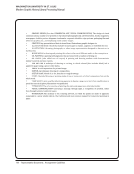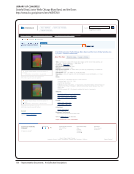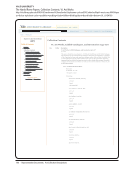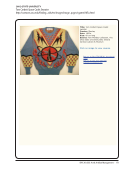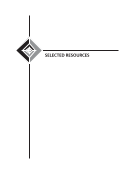SPEC Kit 333: Art &Artifact Management · 113
Washington University in St. Louis
Modern Graphic History Library Processing Manual
3
INTRODUCTION
The Modern Graphic History Library is dedicated to acquiring and preserving distinguished works of
modern illustration and pictorial graphic culture while also promoting sustained academic consideration of
those materials. Focusing on artists’ working materials and sketches as well as finished artworks, the
range of the collection extends from book, magazine, and advertising illustration to graphic novels, comics,
poster design, pictorial information design, and animation, with the Al Parker Collection standing as a
highlight.
The purpose of processing the MGHL collection is to organize and preserve archival documents and
artwork relevant to the history of modern illustration and to ensure its access to Washington University
faculty and students, and the public.
This manual is based on the Washington University Archives manual and manuals created by other
repositories and adapted for specific use at the MGHL:
“Processing Manual,” The Museum of Contemporary Art, Los Angeles, May 2008.
“Archival Processing Manual,” Beinecke Rare Book and Manuscript Library, Yale University,
(http://www.library.yale.edu/beinecke/manuscript/process/index.html) revised Mar. 2001.
“Processing Manual and Policy Guide,” Archives and Modern Manuscripts Program, History of
Medicine Division, National Library of Medicine, Jun. 2000.
Background Research
It is important to obtain information regarding dates, works, contributors, and publications. Further
research into the artworks and persons involved may also be required. Research is fundamental to
enabling informed decisions regarding the context, arrangement, and value of the materials.
When secondary sources are unavailable, information can be gleaned from the collection itself.
Information from secondary sources should also be verified by the collection.
Guiding Principles
Respect des fonds/provenance. Papers or records created or accumulated by one person or office should
not be intermingled with those of another.
Original order. Identify and preserve if possible this will save processing time and may reveal something
about the creator (especially important in dealing with personal papers).
Washington University in St. Louis
Modern Graphic History Library Processing Manual
3
INTRODUCTION
The Modern Graphic History Library is dedicated to acquiring and preserving distinguished works of
modern illustration and pictorial graphic culture while also promoting sustained academic consideration of
those materials. Focusing on artists’ working materials and sketches as well as finished artworks, the
range of the collection extends from book, magazine, and advertising illustration to graphic novels, comics,
poster design, pictorial information design, and animation, with the Al Parker Collection standing as a
highlight.
The purpose of processing the MGHL collection is to organize and preserve archival documents and
artwork relevant to the history of modern illustration and to ensure its access to Washington University
faculty and students, and the public.
This manual is based on the Washington University Archives manual and manuals created by other
repositories and adapted for specific use at the MGHL:
“Processing Manual,” The Museum of Contemporary Art, Los Angeles, May 2008.
“Archival Processing Manual,” Beinecke Rare Book and Manuscript Library, Yale University,
(http://www.library.yale.edu/beinecke/manuscript/process/index.html) revised Mar. 2001.
“Processing Manual and Policy Guide,” Archives and Modern Manuscripts Program, History of
Medicine Division, National Library of Medicine, Jun. 2000.
Background Research
It is important to obtain information regarding dates, works, contributors, and publications. Further
research into the artworks and persons involved may also be required. Research is fundamental to
enabling informed decisions regarding the context, arrangement, and value of the materials.
When secondary sources are unavailable, information can be gleaned from the collection itself.
Information from secondary sources should also be verified by the collection.
Guiding Principles
Respect des fonds/provenance. Papers or records created or accumulated by one person or office should
not be intermingled with those of another.
Original order. Identify and preserve if possible this will save processing time and may reveal something
about the creator (especially important in dealing with personal papers).






















































































































